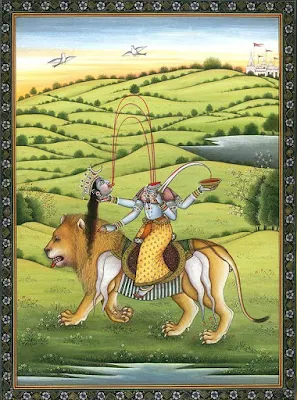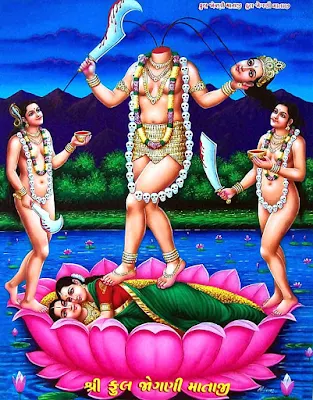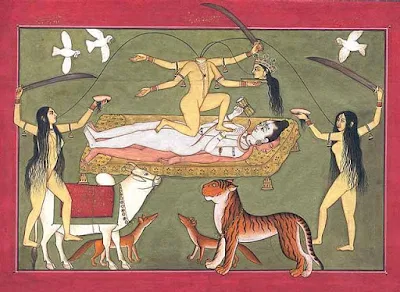WHO DIES BEFORE DYING, DOES NOT DIE AFTER DYING
Consequently, the Great Cosmic Wisdom Chinnamasta whose representation is headless, is the Great Cosmic Wisdom who helps the sincere and devoted yogi to dissolve his or her mind, including all the ideas, attachments, habits, preconceived ideas into the Pure Divine Consciousness. This helps him or her to transcend the mind and to merge with the supra-mental state (unmana) of the Divine Beatific Void.
This is why we need not fear the loss of our head or of time, because sooner or later death takes us all through the great passage, regardless of whether we want it or not.
In fact, the only path towards spiritual awakening is the so-called “sacrifice of the mind”, implying the renunciation to the complicated mechanisms of attachment and possession, of which the most persistent is the idea “I am the body”.
In the spiritual tradition this sacrifice is symbolized by decapitation, suggestively indicating the separation of the mind from the body, it represents the freedom of the consciousness from the material outfit of the physical body.
On the other hand, it helps release the potential subtle energies present in the practitioner’s being.
 We can still ask ourselves: why does this concept need to be pictured in the terrible image of the Great Cosmic Wisdom Chinnamasta when it could be explained and analyzed theoretically in less “shattering” conditions?
We can still ask ourselves: why does this concept need to be pictured in the terrible image of the Great Cosmic Wisdom Chinnamasta when it could be explained and analyzed theoretically in less “shattering” conditions?The answer is that usually, visual images have greater and more dramatic impact on the subconscious. Thus determining faster and more forceful changes in one’s concepts and actions, and achieving more effective results than a theoretical lecture.
Generally speaking, the mind can accept the points of view presented in a theoretical lecture, and still avoid the reality of these teachings, while the impact of the image cannot be avoided so easily, because the image “communicates” more intensely and more directly with the spiritual heart of the being.
The suffering caused by the sacrifice of the ego represents a tough experience for many people, whom many try to avoid, although they may admit its spiritual importance.
This type of experience usually causes a complete re-orientation of their energies towards deeply spiritual purposes and therefore it is associated, in the initiatory tradition to a “second birth”.
The terrible image of the Great Cosmic Wisdom Chinnamasta, the headless goddess, is the most expressive way to suggest a fundamental transformation for the human being, meaning the renunciation of the limited and ephemeral individuality of the ego, so as to be absorbed ecstatically in the plentitude of God’s Universal Consciousness.
The iconographic representations of the Great Cosmic Wisdom Chinnamasta show her holding her own head, whom she cut herself, in her right hand, and drinking the blood springing from her open throat.
Even so, her face does not indicate suffering, or pain, but it shows the beatific feeling of contentment and happiness.
The significance of this aspect is that of the joy of transcending the earthly condition and the suffering caused by its loss.
At the same time, Chinnamasta’s image represents maybe the most energetic form of manifestation of the goddess Shakti eloquently indicating the power of transformation in full action.
As a result of this fact, the cut head does not appear as lifeless, but it is even more alive than previously. The consciousness is not limited to the dimensions and functions of the body, but it exists separately from it.
Only when it is freed from the “prison” of the body can the consciousness express itself fully, acquiring the profound divine freedom and knowledge.
Even if the idea of transcending the physical consciousness can be frightening for certain people, the idea of remaining confined to the bodily consciousness and being subject to the influence of the body and death appears as even more frightful.








